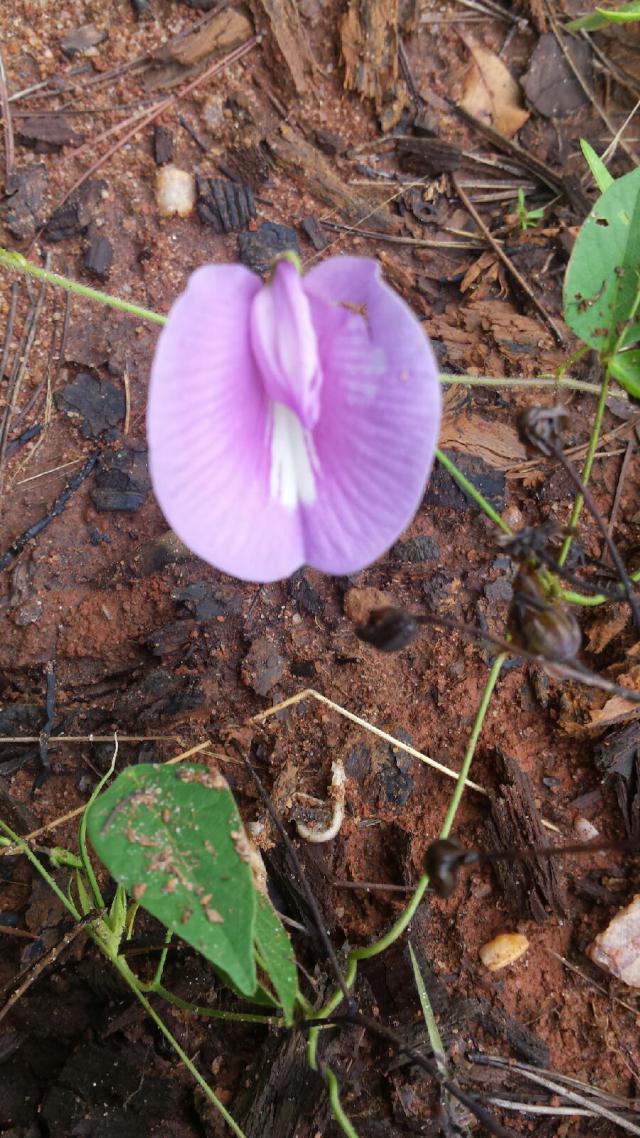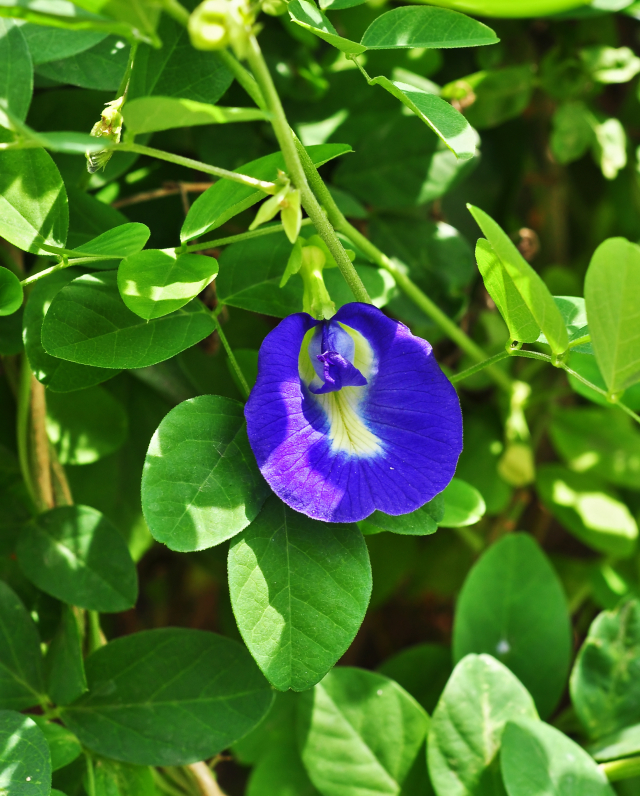
I’ve been going through some old pictures this week and I dug out this gem that my dad sent me last spring. Yes, laugh, we all know what the flower looks like. That’ll actually come in handy in a bit.
But first, see what you can tell about the plant’s habit. It’s herbaceous, that much is clear. The stem looks rather thin and curling, plus you can see some tendrils. That leaves you to think vine. We’ve got an herbaceous vine with flowers that look like exaggerated (and dirty-minded) garden pea flowers, so we’re looking at a member of the pea family, Fabaceae.
Now to look at the flower itself, as a primary means of identification. It resembles female genitalia, if you hadn’t noticed, so you might be inclined to think this was a member of the genus Clitoria. Not a bad guess. It’s a tropical genus, so their members grow well in the steamy South Carolina heat, and we have a couple native species as well as the invasive Clitoria ternatea, an Asian species with no small economic importance. (It’s used to flavor and color gin, to make tea, and as a coloring agent in many Southeast Asian dishes.)
However, if you pay close attention, you’ll notice that this flower has what looks like a green spur above the principle flower. That’s actually the key to identifying this flower, and marks it as the aptly-named spurred butterfly pea, Centrosema virginianum.
Still a pea, but a completely different genus. I mis-identified this the first time I looked at it. Pay attention to the small details!
Bonus picture of the Asian pigeonwings, Clitoria ternatea:






